Examine an LED bulb and you are likely to find the LEDs on board are phosphor-converted white LEDs (PC-LEDs). These are created either from blue- or near-ultraviolet-emitting chips emitting light at about 450 nm that are coated with a yellow phosphor. The phosphor down-converts the light output into lower visible light frequencies. PC-LEDs that operate this way are sometimes said to be high-CCT, 450-nm blue-pump types with the “pump” denoting the down-conversion process.
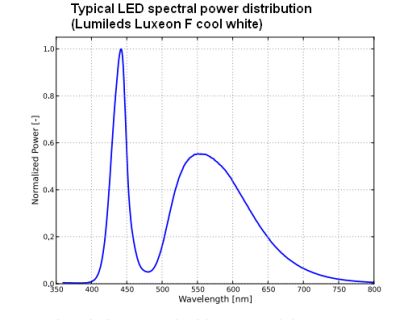
Despite the conversion that the phosphor provides, some blue light still leaks through. And this blue light is proving to be controversial. Media reports claim blue emissions can be hazardous with ill effects in humans ranging from retinal injury to disruption of the circadian rhythm.
However, many of these claims are not much more than hearsay. There is a lack of verifying research partly because a wide range of factors can affect the symptoms purported to be caused by blue LED light. Moreover, LEDs aren’t the only light sources with emissions in the blue part of the spectrum. In one test, a group of 60-W-equivalent LED bulbs checked for blue light output were found to put out less blue light than ordinary fluorescent bulbs.
Nevertheless, some manufacturers are trying to reduce the blue light output of their LEDs if for no other reason than better marketing. The usual approach is to move the LED emissions toward the shorter wavelengths of the upper UV band, then convert the emissions to the visible light spectrum via phosphors as usual for PC-LEDs. (The alternative, LEDs that produce longer wavelength light, is problematic because of inefficient light emissions and physiological effects that are potentially worse than those of blue light.) Bumping the LED output to shorter wavelengths is the approach taken by Soraa with its BlueFree LEDs. Soraa says these are violet-pump rather than blue-pump LEDs where the spectrum of the emitted light has been shaped to create a blue gap. Soraa says removing energy in a relatively narrow blue spectral range makes it is possible to retain the color temperature of an incandescent light while virtually removing any blue radiation from the spectrum.
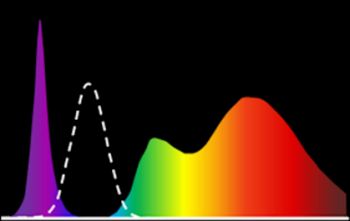
Soraa also says its violet-pump LEDs are relatively efficient. This is noteworthy because LEDs emitting light in the higher UV bands have been notoriously inefficient until relatively recently. For example, even three years ago UVC LEDs were commonly converting only about 5% of their input energy into light. The rest of the energy converted to heat, making thermal dissipation a challenge.
The efficiency of UVC LEDs has risen to the point where they are viable candidates for sterilization equipment, where they can bring energy efficiency gains. And it’s possible that work on the higher UVC wavelengths will yield more efficient PC-LEDs that can avoid emitting in light in the blue 450-nm range.
No question the UVC band has attracted a lot of interest from LED makers. One is Osram which initiated the development of UV-C LED years ago and says it is accelerating the development of high-power UV LEDs. Osram has said it is focusing on development high-power UV LEDs for water disinfection.

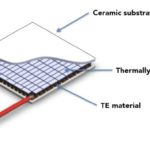

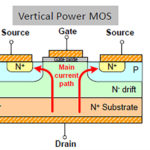
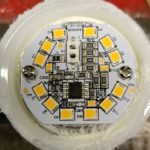

Leave a Reply